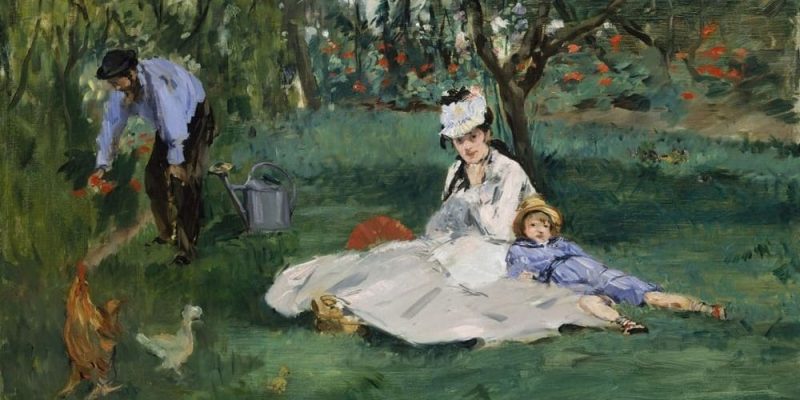We explain what content is in a general sense and its meaning in art and literature. Also, what is a content creator.

What are the contents?
In very general terms, when we talk about content we refer to the essence of things, as opposed to their form or container. For example, if we consider a glass of water, the glass will be the container, while the liquid will be the content. It is a word from Latin, the result of the union of voices with– (“completely”) and I will have (“retain”).
However, every day we use the word “content” with an endless number of different connotations, depending on the specific area we are talking about. For example, when we say that someone “is very restrained,” we are saying that he is restrained, cautious, prudent, that is, that he remains sane as much as possible or within the limits of things and situations.
This same meaning is used when we refer to containment. Suppose a child comes to us crying inconsolably, and we hug him and listen to make him feel comforted. In psychological terms, this is known as “giving containment”, since the child has, figuratively speaking, his feelings placed “outside”, and by listening to them and hugging him we help him put them back in their place. This does not mean that feelings must necessarily be repressed, but rather it is a metaphorical, figurative use.
Something similar happens when we look at the end or beginning of a book for the “table of contents” or “index of contents”, which refers precisely to the information that is on the pages of the book or, in other words, to the information the book contains. In this case, the container is the book and the information is the content. This same logic can also be applied to films, whose content would be the plot (the narrated story) or sometimes the subtext of said story, that is, the “message” or the interpretation that a person makes of the film.
Structure and content of a text
When commenting on a text, generally, a distinction is made between its structure and its content. As we have said, The content is the total of the information contained in the textthat is, their words and the meanings of said words. On the other hand, The structure is the way in which said content appears in the textthat is, the place we assign them and the order in which the reader usually reads them.
Thus, the structure of a text has to do with things as simple as the order of its paragraphs and the sequence of sentences within each one. A well-structured text, therefore, is a text that provides the reader with an orderly, logical, sequential reading, without jumps or breaks in the discursive thread. It is a text that has, so to speak, things in their right place.
On the other hand, a text with good content is more difficult to define. It is possible that we find the content of a text good simply because we liked what it says, or we found the topic it addresses interesting. But it is more difficult to propose a universal definition in these very subjective terms. In any case, we could say that a text with good content is one that meets the reader’s expectations.
Form and content in art and literature

Since classical antiquity, literary texts and other forms of art have been thought about in terms of their form and content, and the difficulty of separating one thing from the other has become evident, as can be done in texts of another nature. This is because, In art and literature, form and content tend to constitute an indivisible unit.
Let’s think, for example, of a poem that we like. What is the way? Without a doubt, the arrangement of the verses, the way they are ordered, the structure of the poem. And what is the content? Possibly what those verses say. But at the same time, would it be the same poem if we altered the form, that is, if we changed the order of appearance of the same content? No, it wouldn’t be. Because that poem exists only in its form and with its content.
This becomes much more evident if we think of a painting, whose form would be the framework of colors and whose content would be what it was decided to paint, or perhaps the colors with which it is painted. It is not so easy to separate one thing from the other. The same goes for a Beethoven symphony: can we separate the form (the order of the notes) from the content (the notes themselves)? No, we cannot, because the symphony exists precisely when those notes are in that order, that is, the form is the content.
Furthermore, in artistic and literary works, the “message” of the work, if any, tends to be mysterious and left to the interpretation of the reader or viewer, or the specialized critic. So that the supposed content of the work is not always evident or it may even vary from one person to the next.
What is a content creator?
A content creator is a person dedicated to the job of generating information for mass consumptiongenerally through the internet or other contemporary communication channels. These contents can be stories, reflections, images, animations, videos or anything else that may be, precisely, contained in this type of platforms or services.
There is, however, a difference between a content creator and an artist or writer. In general, the artist is thought of as a craftsman dedicated to the production of unique and singular pieces, unrepeatable and of deep aesthetic value. A content creator, on the other hand, pursues more mundane aspirations, such as feeding a website, entertaining an audience, or providing useful information to an audience. However, the boundaries of this distinction can often be blurred.
Content creation It is, at the beginning of the 21st century, a common and booming profession, especially on the internet and streaming services.whose popularization has changed the terms in which we talk about cultural consumption: instead of talking about “works” (a term reserved for art and literature), we talk about “contents”, despite the fact that many of them can be as original, interesting and aesthetically valuable as a work of art.
Digital content
Digital content are those that are contained on digital platforms, that is, on the internet. It is a term that has become very fashionable since the explosion of social networks and the so-called ICTs (Information and Communications Technologies) at the beginning of the 21st century. Therefore, digital content They can consist of information in various formats: text, audio, video, animations, software, video games and various combinations of all these categories.
References
- “Content” in the Language Dictionary of the Royal Spanish Academy.
- “Radication of the word Content” in the Online Spanish Etymological Dictionary.
- “Digital content: what they are, types and how to use them in your marketing strategy” in Inbound Marketing.





